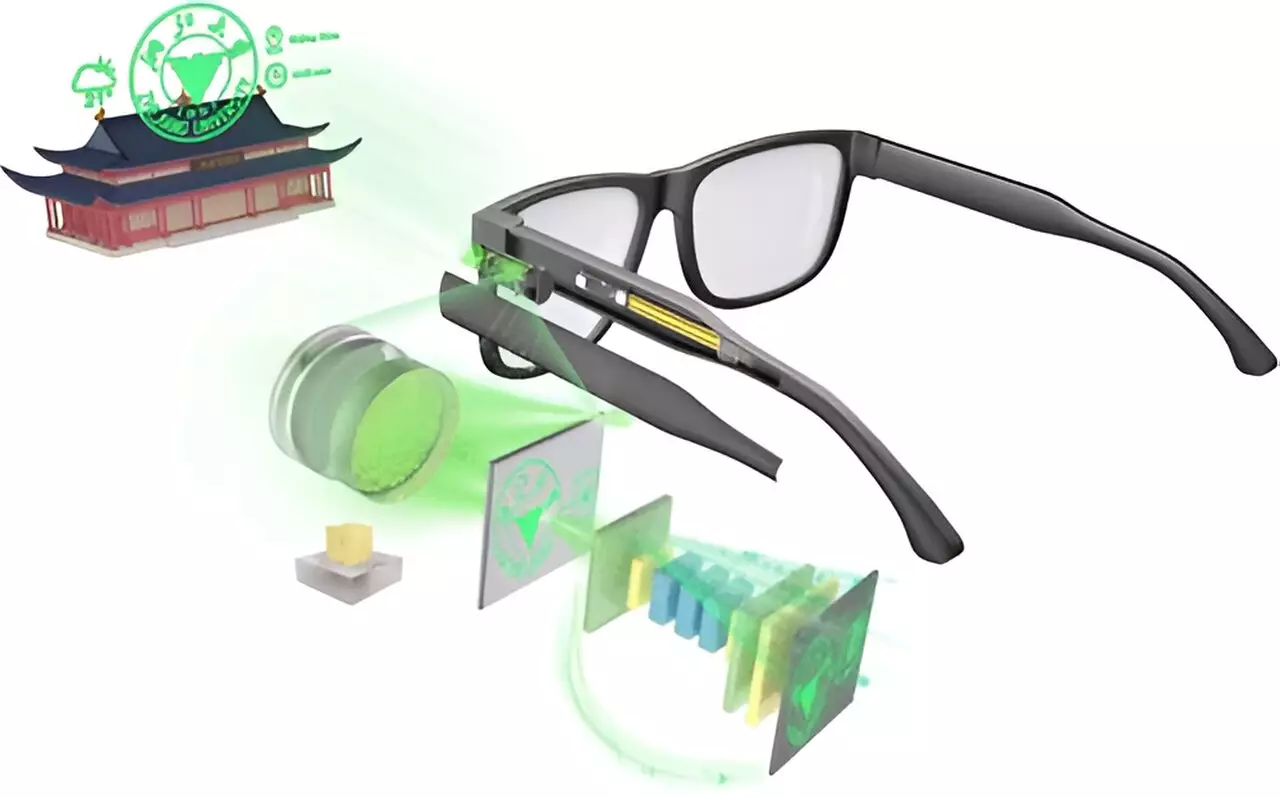Augmented reality (AR) is a transformative technology that overlays digital content onto the real world, bridging the gap between virtual and physical spaces. While often associated with gaming and entertainment, its potential applications extend far beyond. Fields such as healthcare, automotive, and education stand to benefit significantly as AR technology evolves and integrates into everyday devices. Recent research in ACS Photonics has unveiled promising developments that may pave the way for more user-friendly and portable AR solutions.
As AR systems have traditionally operated through bulky goggles or complex setups in vehicles, the integration of high-quality optical components has revealed considerable challenges. A major hurdle lies in miniaturizing the AR experience while maintaining image fidelity. Standard configurations utilize multiple lenses that can negatively impact resolution and field of view when attempting to shrink down. The coordination and geometry of these lenses are crucial; with conventional methods, the effort to condense hardware has frequently led to a compromise in overall image quality.
A promising new approach, spearheaded by Youguang Ma and team, proposes a hybrid model that combines two different optical technologies—a metasurface and a refractive lens. This design, featuring a microLED display equipped with tiny green light-emitting diodes (LEDs), streamlines the multi-lens configuration into a compact single-lens system. The metasurface, a thin film composed of silicon nitride with intricate patterns etched into it, manipulates light emitted from the microLEDs to create clear images. Subsequently, a refractive lens composed of a synthetic polymer enhances this imagery, correcting distortions and refining detail.
To further improve the overall picture quality, the research team utilized advanced computer algorithms that analyze and correct optical imperfections prior to projection. This preprocessing step proves critical in producing images that resemble their original counterparts with remarkable accuracy. Tests performed on a prototype demonstrated image distortion of less than 2%, which rivals commercial AR devices utilizing more complex designs. For example, a reprojected image of a red panda showed a structural similarity of 74.3% to its original—an impressive achievement indicating the advances in precision that this new technology brings.
Moving forward, the implications of these advancements in AR technology could lead to a new benchmark for mainstream wearable devices. As researchers continue to refine and expand the capabilities of their design to encompass a wider spectrum of colors, the potential for everyday applications grows. From enhancing surgical precision to providing real-time information to drivers, the future of AR glasses appears promising, as they seek to blend seamlessly into our daily lives without compromising on image quality and functionality. This transformation signifies not just a shift in technology but a fundamental change in how we interact with our surroundings and the information that enriches our experiences.
As AR continues to bridge the gap between digital and physical worlds, innovations like these provide a glimpse into a future where advanced technology is accessible, practical, and potentially life-changing.


Leave a Reply